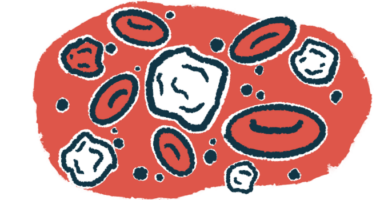Permanent organ damage common in ANCA-associated vasculitis
Researchers advise screening for cardiovascular disease, malignancy risk factors

Treatments for ANCA-associated vasculitis (AAV) have improved over time, but many patients still develop permanent organ damage, even though the extent of it has been less severe in recent years, a study in Turkey suggests.
Mortality rates have remained largely similar over the years, with death more likely among those who have cancer, severe infection, or active or persistent AAV.
The study, “Damage accrual and predictors of mortality in ANCA-associated vasculitis: a retrospective observational study,” was published in Rheumatology International.
AAV is a group of rare autoimmune diseases marked by inflammation and damage to small blood vessels. Most cases are associated with self-reactive antibodies, called ANCAs, being produced that prompt the immune system to attack small blood vessels. The inflammation associated with AAV can damage organs such as the kidneys and the lungs, and this damage may accumulate and become permanent over time, increasing the risk of death.
Here, researchers in Turkey looked at factors linked to organ damage and death in AAV by retrospectively reviewing data from 254 patients seen at their referral center. The patients were diagnosed at an average age of 55.6 and had lived with AAV for a median of 67.5 months, or about 5.5 years. Most (73.2%) had granulomatosis with polyangiitis (GPA), while 26.8% had microscopic polyangiitis (MPA), the most common types of AAV.
The most common disease manifestations
Among those tested for AAV-causing antibodies, more than half (53.7%) had ANCAs against the proteinase 3 (PR3) enzyme and about a third (36.1%) had ANCAs that targeted the myeloperoxidase (MPO) enzyme. Both are found in a type of immune cell implicated in AAV.
The most common disease manifestations were kidneys problems (75.8%) and lower respiratory tract involvement (74.4%).
All the patients were treated with corticosteroids to induce disease remission, whic is when symptoms go away. The second most common induction treatment was cyclophosphamide. Others treatments, given to fewer patients, included rituximab, methotrexate, and mycophenolate mofetil.
Data from 174 patients showed nearly two-thirds (64.1%) achieved remission after six months of induction treatment. Some were in partial remission (11.4%), while others had active disease (16.2%) or persistent disease (8.4%), meaning the disease had remained continuously active without going into remission. About a third (35.1%) had a relapse after a period of remission that required more immunosuppressive treatment. Relapses were significantly more frequent among those who tested positive for anti-PR3 ANCAs versus anti-MPO ANCAs (42.5% vs. 29%).
Organ damage in AAV
Available patient data for the Vasculitis Damage Index (VDI), which scores organ damage since disease onset, demonstrated that most patients (89.7%) developed organ damage over time. Participants’ median VDI score, which ranges from 0 to 63 with higher values indicating more extensive or severe damage, was 2.
When the researchers compared data between 1997-2011 and 2011-2021, they saw VDI scores were higher in the first period for the whole patient population (3 vs. 2 points), those with GPA (3 vs. 2 points), and among the MPA group (4 vs. 2 points). These differences reached statistical significance for all patients and the GPA group.
More severe damage was significantly linked to older age, as well as more active disease and worse kidney function at the study’s start.
After five years, most patients (88.1%) were still alive. There were trends of higher survival in the first period relative to the second period (87.5% vs. 77.6%), but these differences didn’t reach statistical significance.
Fifty patients (19.7%) died, most often due to severe infection. Those who developed cancer were 15 times more likely to die, while those with severe infections or active/persistent disease after induction treatment had about six times higher odds of death than those without.
“Permanent organ damage was detected in the majority of the patients,” the researchers wrote. “Although median VDI scores decreased over the last decade in our AAV [patient group], mortality rates remained similar.”
To improve the outlook for AAV, “patients should be screened for cardiovascular disease and malignancy risk factors,” the researchers wrote, adding that new treatments like Tavneos (avacopan) “could help improve prognosis.







